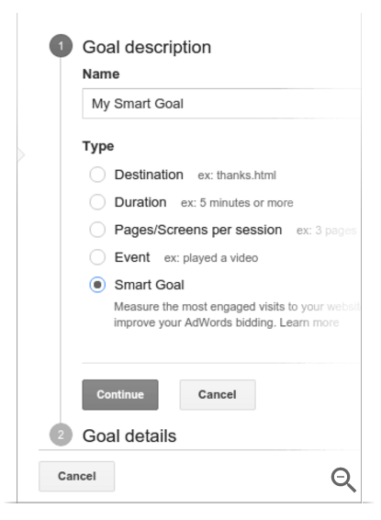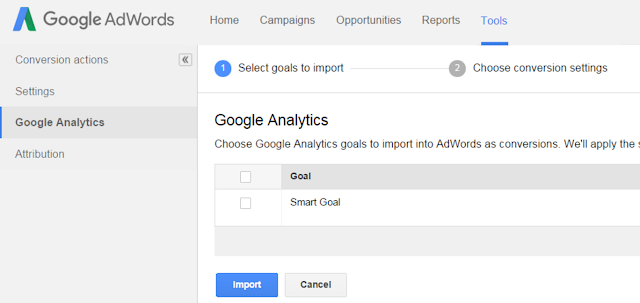Every PPC hero worth their salt knows that attribution and tracking represents the backbone of optimization. In the absence of accurate data, paid search advertisers are practically left flying blind. While a large portion of businesses are already tracking conversions, Smarts Goals powered by Google Analytics helps identify high quality traffic and optimizes for those visits within AdWords.
How Do Smart Goals Work?
Smarts Goals utilize machine learning to examine a wide array of signals about website visits. This helps identify those that are most likely to provide a conversion. Individual visits are assigned a score with the most valuable visits being translated into Smart Goals. This process employs a similar learning model as Remarketing Smart Lists. Signals examined within the creation of Smart Goals include pages per session, session duration, location, device, and browser.
In order to determine optimal traffic, Smarts goals establish a threshold by selecting approximately the top 5% of traffic originating from AdWords. From there Smart Goals are extended to all website visits including those from publishers outside of AdWords. Once Smarts Goals are enabled within Google Analytics they can be imported directly into an AdWords account.
Paid search advertisers should note that there are small list of requirements for Smart Goals. For one, the linked AdWords account must have sent upwards of 1,000 clicks to the associated Google Analytics view in the past month. Additionally, the reporting view must receive less than 1 million hits per day. Lastly, the Data Sharing setting “Google product and services” must be turned on for your Google Analytics Account.
Setup
Step 1: Activate Smart Goals in Google Analytics
In order to initiate Smarts Goals within Google Analytics simply go to the Admin section of your Analytics account, access Goals under the view heading, and click + NEW GOAL. Select Smart Goal(if available from the provided list) and create a name for your Smart Goal. The highest quality visits to your website will now automatically become smart goals with no additional tagging or customization required.

Step 2: Import Smart Goals into AdWords
Similar to any other goal within Google Analytics, Smart Goals can be imported into AdWords and used as a conversion. Once you’ve defined a conversion in AdWords, more responsive and valuable optimizations can occur.

Step 3: Optimizing with Smart Goals in AdWords
As almost all paid advertisers know, the ability to measure conversions in an account is a prerequisite for optimizing around a target cost per acquisition. If you aren’t already measuring direct conversions today, importing Smart Goals offers an alternative within AdWords to begin adjusting based upon specific audience engagement behaviors.
According to Inside Adwords, Smart Goals will be rolling out over the next few weeks. A couple limitations to keep in mind is that Smart Goals are not customizable, are currently only available for website views, and do not support view-through conversions or cross-device conversions in AdWords. Despite that, paid search advertisers that meet the requirements are sure to soon take advantage of the insight Smart Goals provide.




